The following post is one of my all-time favorites. It was originally published on February 14th, 2013, before I started my plant nursery. Unfortunately, thanks to USDA regulations, I’m not allowed to grow or propagate citrus (in pots) without a special license… so I had to give my little Key Lime trees away since I was fresh out of good microclimates in which to plant them. Some of the other trees I wrote about in this post have since grown large enough to fruit! -DTG
Okay… I’ve posted on this before… and I’ve written a bit about starting nutshere, but it’s really too juicy a topic to cover in just two little posts. The following is my do-it-yourself guide to starting a variety of trees from seed – with plenty of pictures I took of my own projects. Yes – they’re not huge trees yet – but they will be. I’ve only been at this for three years and I’m already amazed by some of the successes.
I’m madly in love with seeds. They’re cheap, readily available and could potentially grow into something amazing. The promise contained in a tiny seed is incredible.
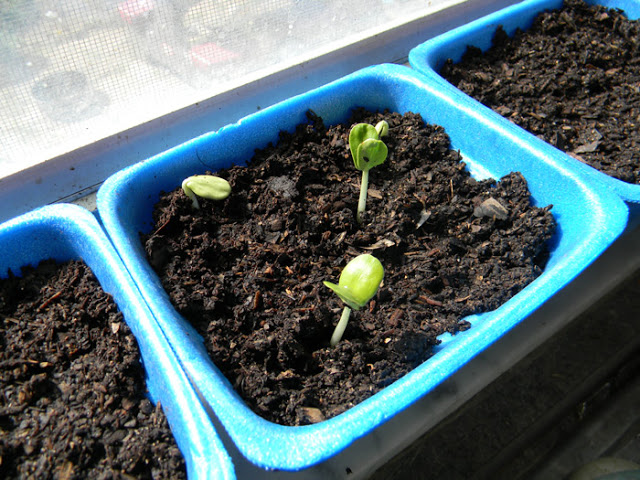 |
|
| Baby carob trees sprouting in a sunny window. |
However, when it comes to growing trees from seed – fruit and nut trees in particular – we’re almost always told “don’t do it!!!”
Why?
“It won’t breed true!!! You’ll get tiny/bitter/nasty/worthless fruit!”
Really? When you save cabbage seed and plant them the next year, do you get tiny/bitter/nasty/worthless plants? No!
The reality is, you won’t get exactly what you started with, but most of the time, you’ll get something worthwhile. There are always genetic traits we don’t like that may pop up, but most of the time, you get something decent – or even excellent – when you plant seeds, fruit trees included.
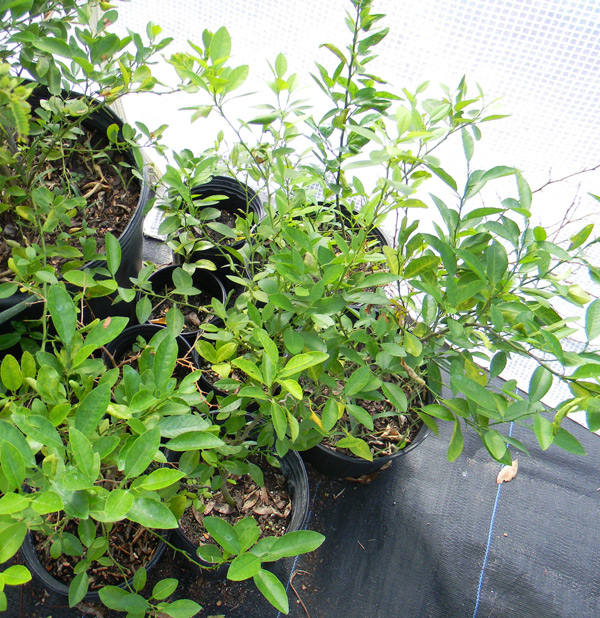 |
| 1-2 year old citrus seedlings in the greenhouse. |
Unlike grafted trees, trees that grow on their own roots are often tougher and larger, if not always as productive. Grafting is very useful for commercial farms because it allows them to grow exactly the variety they want. The navel orange, for instance, is a cloned variety that’s been around for almost 200 years. The same genes… replicated ad infinitum via cuttings and grafting. It’s amazing – but in my mind, not the safest thing to rely on when you’re dealing with diseases, pests and changing climates. Where do we get new varieties with disease resistance, larger fruit, higher cold-hardiness, etc.? We get them from planting seeds and seeing what hidden gems might pop out of the plant’s genome.
Of course – this doesn’t happen overnight. Unlike corn, you can’t breed trees quickly. It takes a long time to go from seed to producing tree. Sometimes prohibitively long. But that doesn’t mean we give up. That just means we start planting right now.
I fully intend to get a variety of something named after me before I die. I’m really not picky – it just has to be something tall, productive and handsome so it compares well with its namesake.
If you’re ready to get started with starting trees from seed, the loquat is a great first candidate. It’s in fruit at this time of year, so it’s likely you can nab some seeds easily. Now let’s look at some various trees and how to start them.
LOQUATS
Here are some one-year-old loquats I started from seed last spring:
They’re about 2′ tall now and growing fast. Pretty much ready to be planted out. Loquats start quite easily from seed and don’t need stratification or scarification to germinate. Just pop a handful of fresh pits in the ground and start watering. Most will sprout. When they do, carefully pull out and pot up the ones you want to keep – then plant the rest on a local foreclosure property.
CITRUS
Citrus are also really easy to grow. Here is a key lime tree my daughter started from seed a little less than three years ago:
It’s over 4′ tall and thriving. Interestingly, unlike some citrus, key limes breed true to type. Plant a key lime seed, you’ll get a key lime tree. Most citrus will give you something edible and similar to their parent (see tomorrow’s post), but not all. From what I’ve heard, cross-breeding is often a possibility, as is the occasional reversion to a sour variety. Plant citrus seeds when they’re fresh as they don’t last long. If they dry out, they’re dead.
AVOCADOS
Avocados are another easy-to-grow tree. Almost every year when I was a kid, my grandmother would start pits impaled with toothpicks and suspended in water. They would grow 1-2′ tall in her window, then she’d transplant them out to her backyard where they would invariably die of neglect. This was sort of a hobby of hers, I suppose. (I miss her tons… I wish she was alive so she could read this post and scold me…). The tree below was started from a Hass pit.
POMEGRANATES
DATE PALMS
PEACHES
CONCLUSION
It’s not an instant gratification thing, but over time you can get a wonderful variety of trees going and find excitement in knowing that no one else has the varieties you’re growing. If you plant plenty of seeds, you’re bound to get some good trees. If one of your home-grown trees produces poorly or bears sour fruit – so what? Graft onto it. Cut it down and make a melon pit. Turn it into wood for your smoker. Make marmalade! What did it cost you? $0.00. There’s no risk!
And who knows – maybe one day, just like me, you’ll get a variety named after you.
Tomorrow I’ll share another fruit tree seed starting success story. Until then, get off the ‘net and go plant something. (After you kiss your sweetheart, of course.)


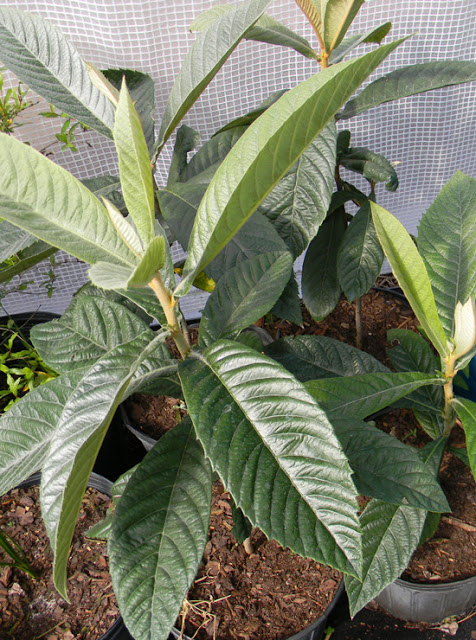
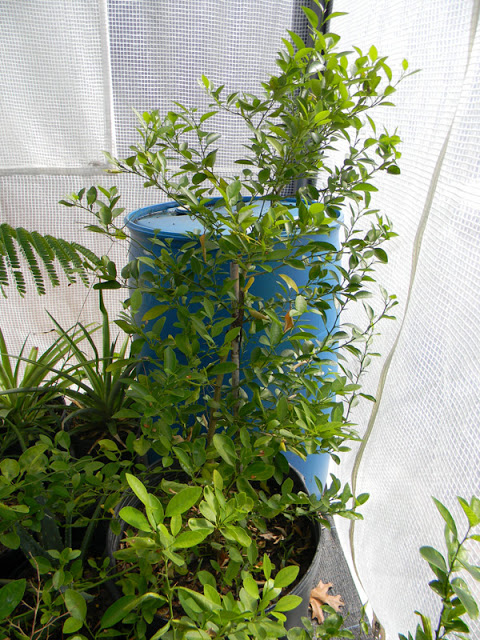
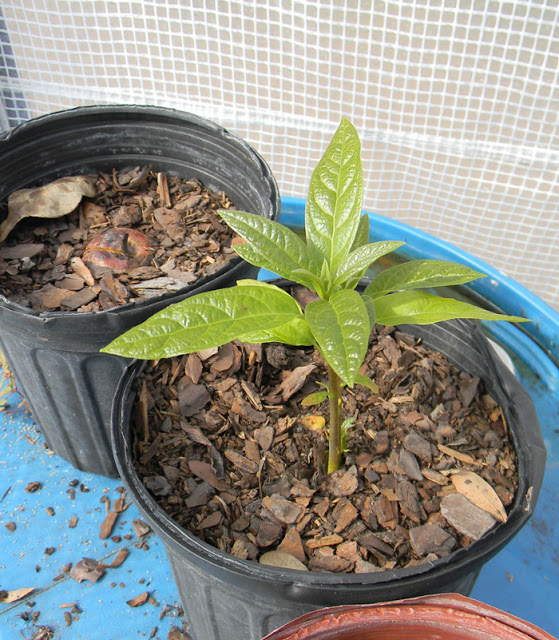
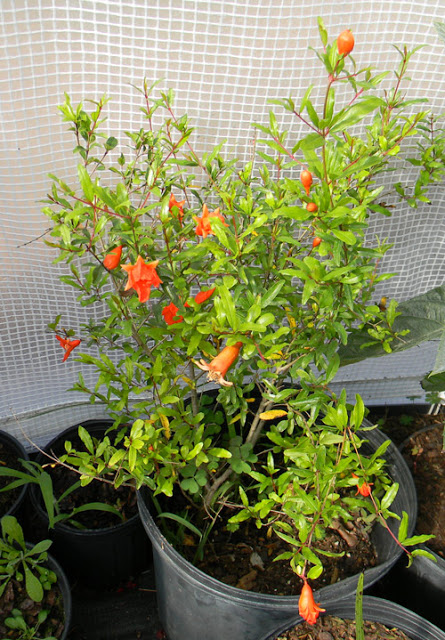
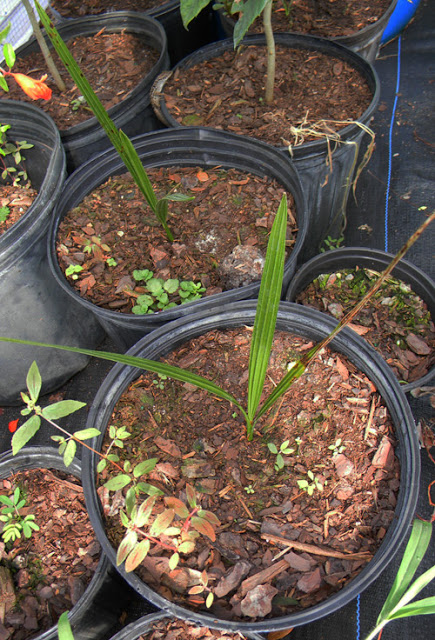
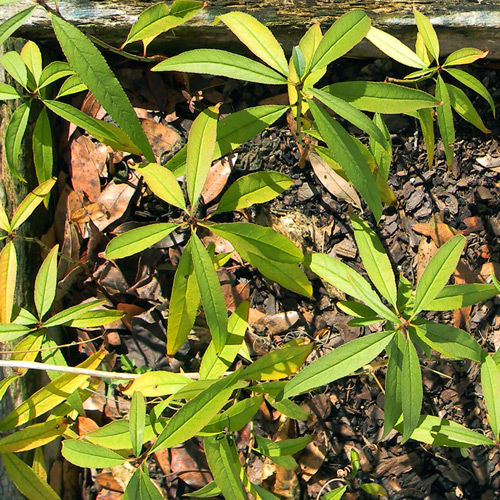
6 comments
Thanks for your interesting and informative post.
How long does it take for a Key Lime tree grown from seed to get fruit?
I came here via eli's blog.
Have a nice day today ~ FlowerLady
Hi FlowerLady!
Citrus usually takes about 8-10 years; however, Key limes are supposed to be precocious. I believe you could get fruit in 6 years or less if the tree was well-tended.
Seedling fruit trees definitely have their place, though I go with grafted varieties with most trees because of my limited space and impatience. Where I grew up, Bradenton, FL, seedling mango trees were everywhere. While most were full of fiber to varying degrees and many had a turpentine flavor, they were, hands down, the sweetest mangos one could imagine. Much better than the grafted varieties. But some were nearly inedible. It was quite an adventure riding around town on bikes and trying out different mangos. And date palms…I had a high school surfing buddy that lived out on Anna Maria Island. On the way from his house down to the beach there was a really tall date palm. We'd pick the dates up off the ground and munch on them, but they were nothing like the ones grown out in the desert. Dates require a very hot dry environment to ripen properly and develop a high sugar content. In Florida they tend to ferment on the tree. For some fruit trees I've had good luck with air-layering. Guavas are very easy to propagate that way. And I've seen Chinese gardeners air-layer lychee and longan trees. I knew an old man organic gardener back in the '70s that air-layered macadamia trees and I think fig trees as well. Great blog. Enjoy the pics and posts!
Very cool. It's interesting how much variation pops up in flavor from seedling to seedling. You're right about the dates, too. Pindo palms are much better palm fruit for the northern half of the state.
I've done some loquat grafting lately and it's gone wonderfully.
Which fruit trees have air-layered well for you?
I'm impressed with anyone who can graft anything successfully. I tried many years ago with some citrus and failed. The only tree I've done well air-layering is guava. I tried sapodilla, but the tree was located several miles from my house and the rats or squirrels kept chewing into my work for the moisture I guess and I was unable to monitor and maintain. As I recall, using a rooting hormone was helpful. I think most any tropical will respond to air-layering, though it does take patience as some take many months to form good roots. Always wanted to try with mango but never really pursued it.
Many tropicals are pretty vigorous growers, though apparently mango is almost impossible to air-layer (though easy to graft).
I once air-layered an orange tree and had it work.
Comments are closed.